Dampwood termites are an often overlooked yet significant pest that can cause considerable damage to properties. Although these termites may not be as widely known as other pests, they can cause major destruction to wood and other materials when left unchecked. In this article, we will explore the hidden damage dampwood termites can cause and how to identify and control them.
Subterranean Termites
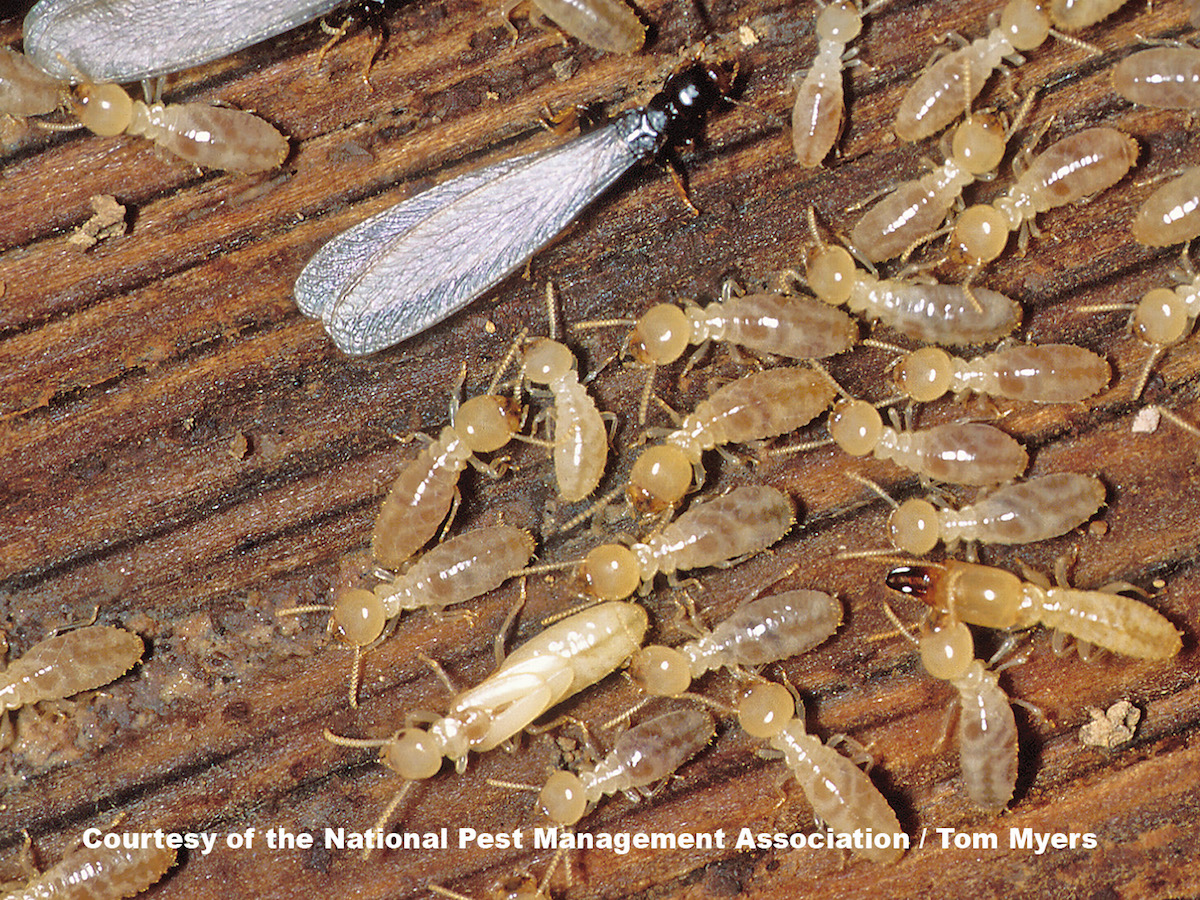
Subterranean termites live underground and build extensive tunnel systems to reach their food sources. Colonies are composed of workers, soldiers and reproductive castes, and can range in size from a few thousand to several million.
Drywood Termites
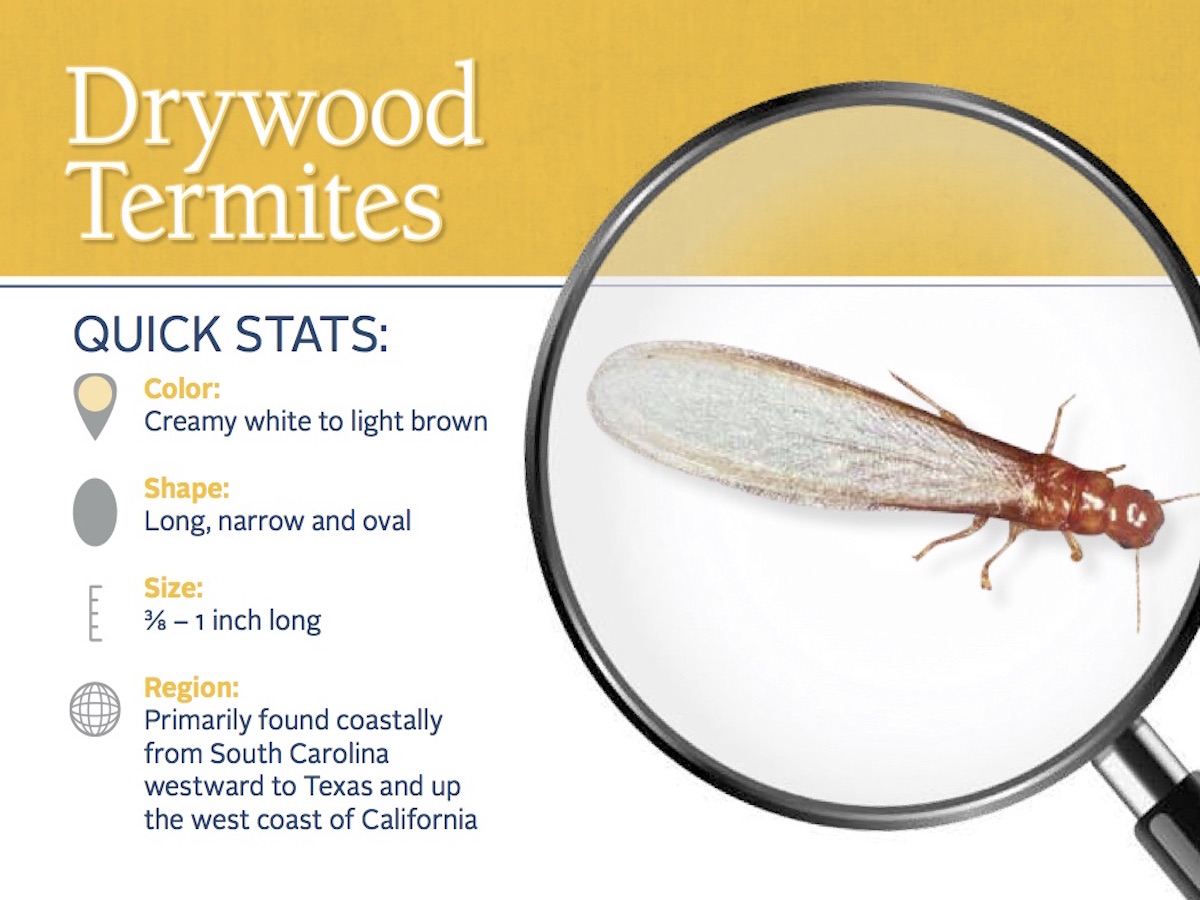
Drywood termites feed on wood, and live in colonies inside the wood they are consuming. Unlike subterranean termites, they do not require contact with the soil, and instead build colonies in undecayed wood. Colonies are composed of workers, soldiers and reproductive castes, and can range in size from a few hundred to several thousand.
Dampwood Termites
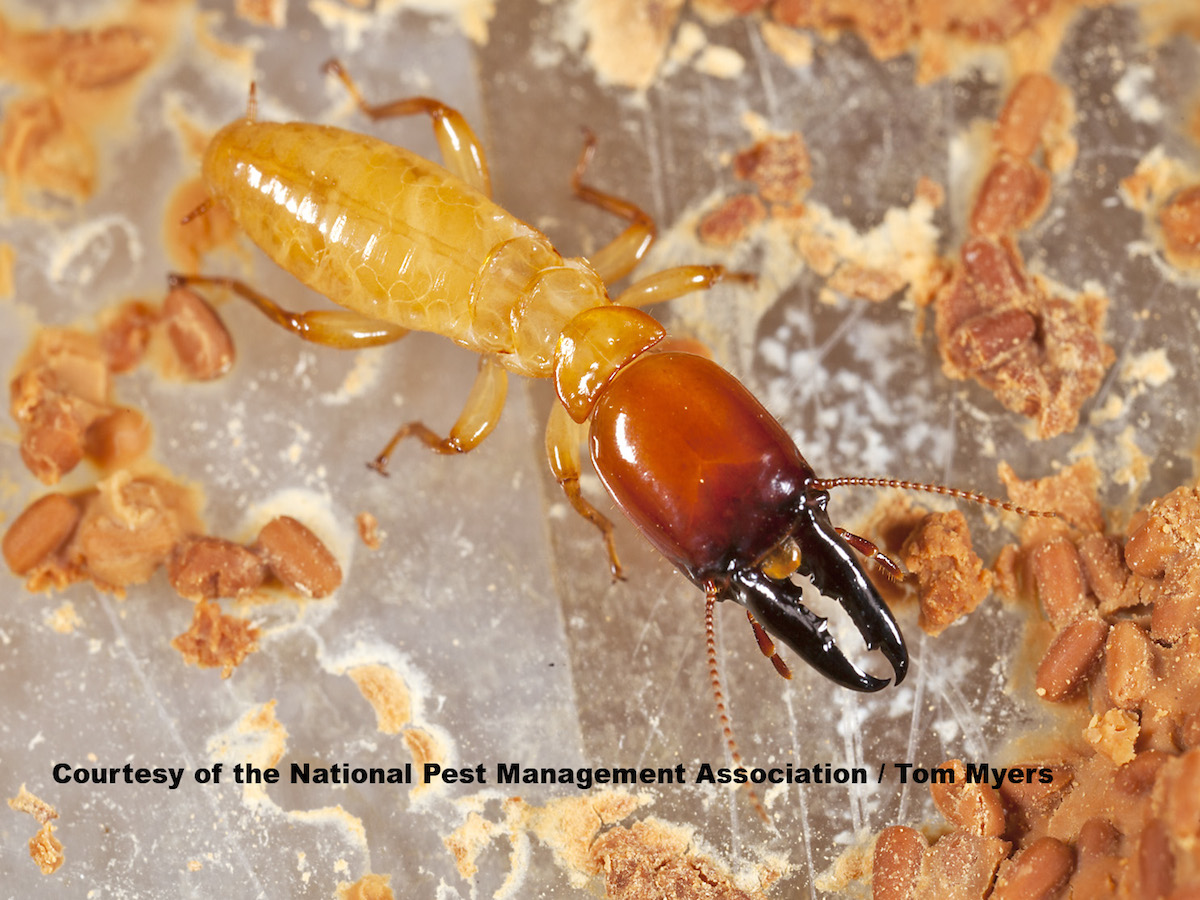
Dampwood termites feed on wood damaged by moisture and prefer warm, humid climates. They live in colonies inside the wood they are consuming and do not require contact with the soil. Colonies are composed of workers, soldiers and reproductive castes, and can range in size from several hundred to several thousand.
Characteristics of Dampwood Termites
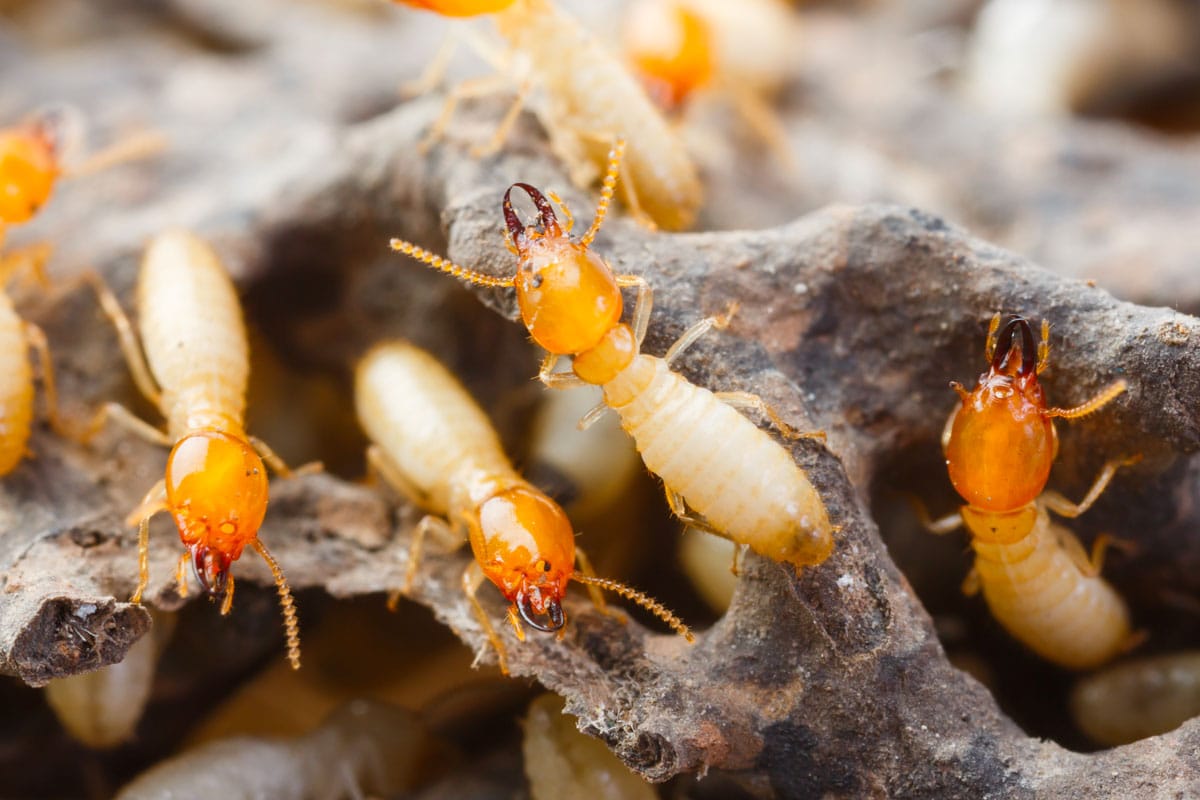
Dampwood termites are wood-eating insects that inhabit moist wood and construct their colonies inside the wood. They have several distinct characteristics that make them easily identifiable. Dampwood termites are larger than other species, measuring up to 3/4 of an inch in length. They are usually light to dark brown in color, and their bodies are segmented. Additionally, they have wings and antennae, but they are not capable of producing sound like other species of termites.
Dampwood termites prefer to feed on decayed wood, but they may also feed on sound wood if the moisture content is high enough. They are most commonly found in damp and decaying wood, such as logs, stumps, and fallen trees. Dampwood termites rarely infest homes and other structures, as the wood must contain a high level of moisture for them to survive.
Dampwood termites are social insects, living in large colonies that can contain several thousand individuals. Colonies are typically started by a single female, known as a queen, who will lay hundreds of eggs. The eggs will hatch into larvae, which will eventually become adult workers, soldiers, and alates (winged reproductives). The workers and soldiers are responsible for feeding and protecting the colony, while the alates will swarm in search of new colonies.
Dampwood termites are considered a nuisance and can cause significant damage to wood if left untreated. Control strategies include removing the infested wood, treating the wood with insecticide, and installing physical barriers to prevent re-infestation.
Habitat of Dampwood Termites
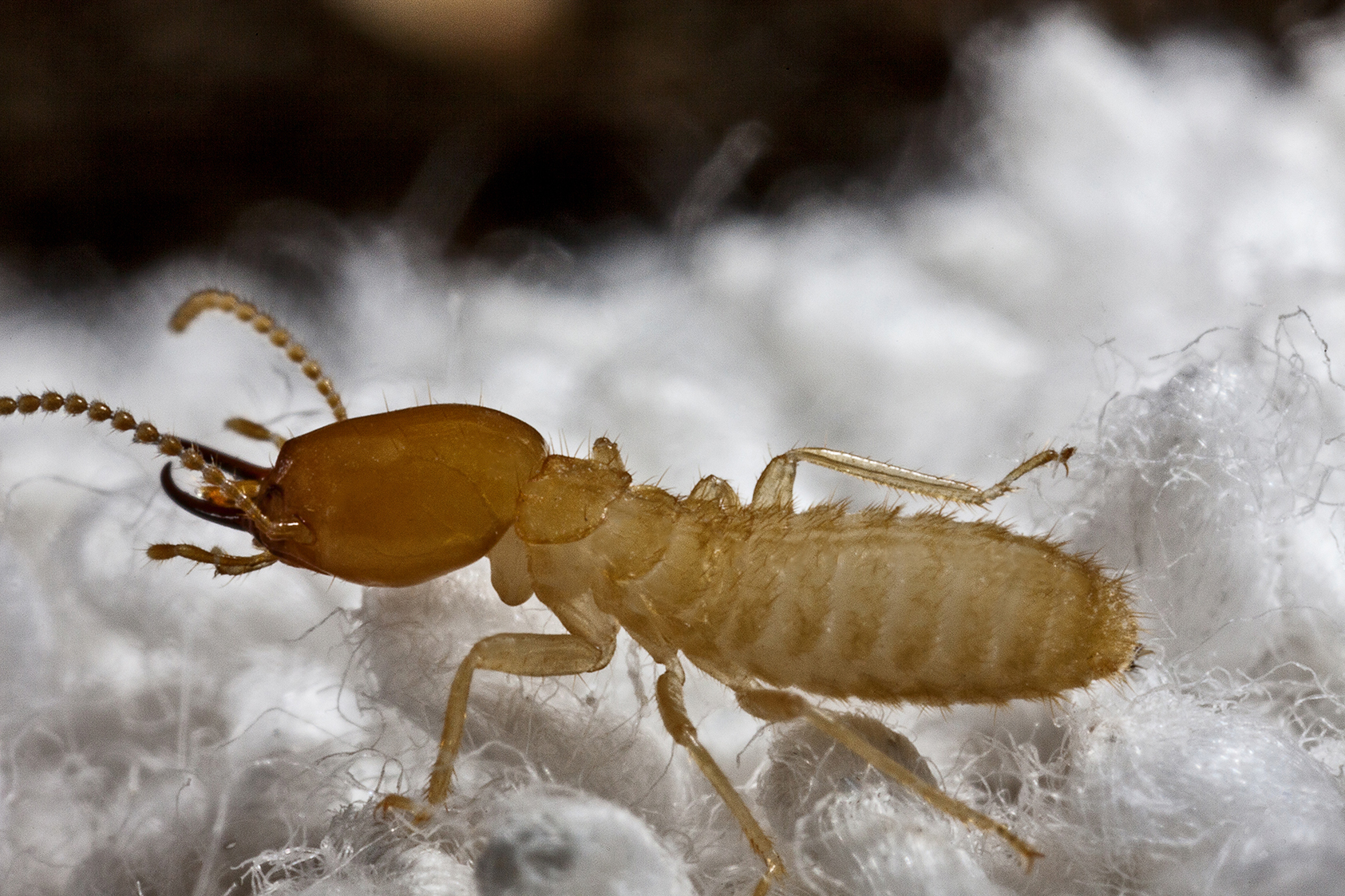
- Dampwood termites live in decaying wood, usually found in moist, shady areas.
- They can also be found in firewood and fence posts that have been exposed to rain and are not well drained.
- These termites are commonly found in coastal regions and wet climates, such as the Pacific Northwest, where the moisture and humidity provide a suitable environment for them to thrive.
- They are also found in stumps, logs, and other decaying wood, as well as in wood debris, soil, and mulch.
- They are most active in the summer months.
Diet of Dampwood Termites
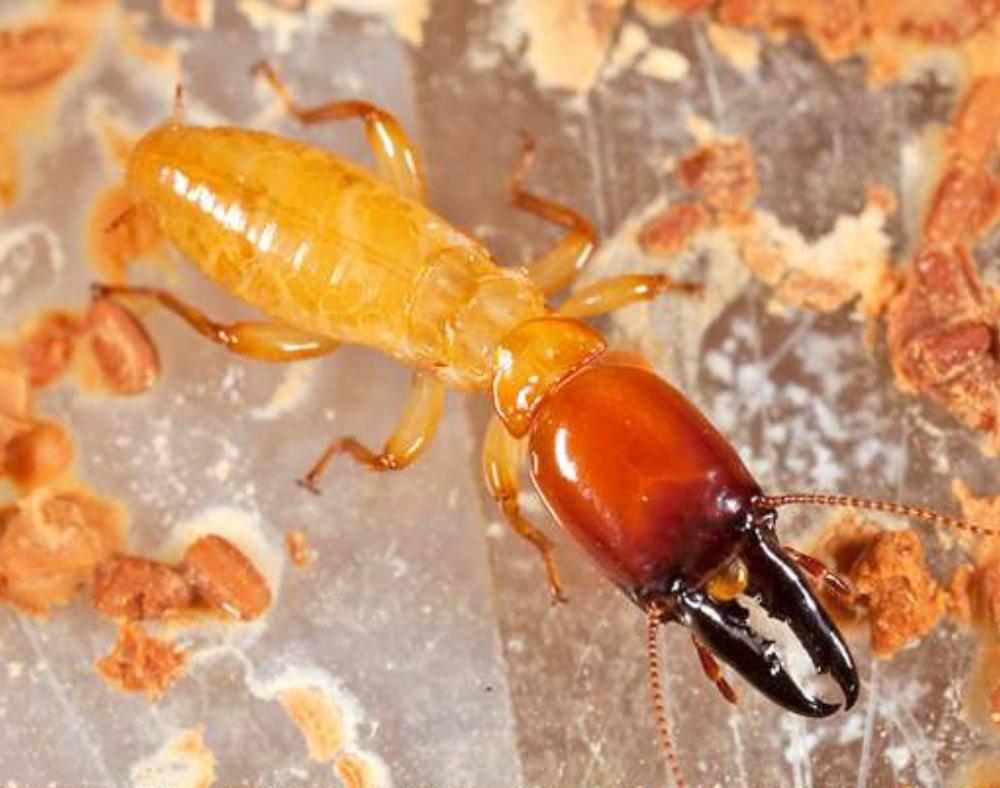
- Dampwood termites primarily feed on wood, paper, and other cellulose materials.
- They are particularly fond of wood that is damp or decaying, as this provides easier access to the cellulose.
- They will also feed on non-cellulose materials such as plastics, rubber, and some types of fabrics.
- Dampwood termites are considered a minor pest, as they do not cause any structural damage to the wood.
- They are, however, capable of causing damage to materials such as paper and cardboard, as well as any other cellulose material.
- Dampwood termites are also known to feed on dead insects and other animal remains, as well as fruits and vegetables.
Signs of Dampwood Termites
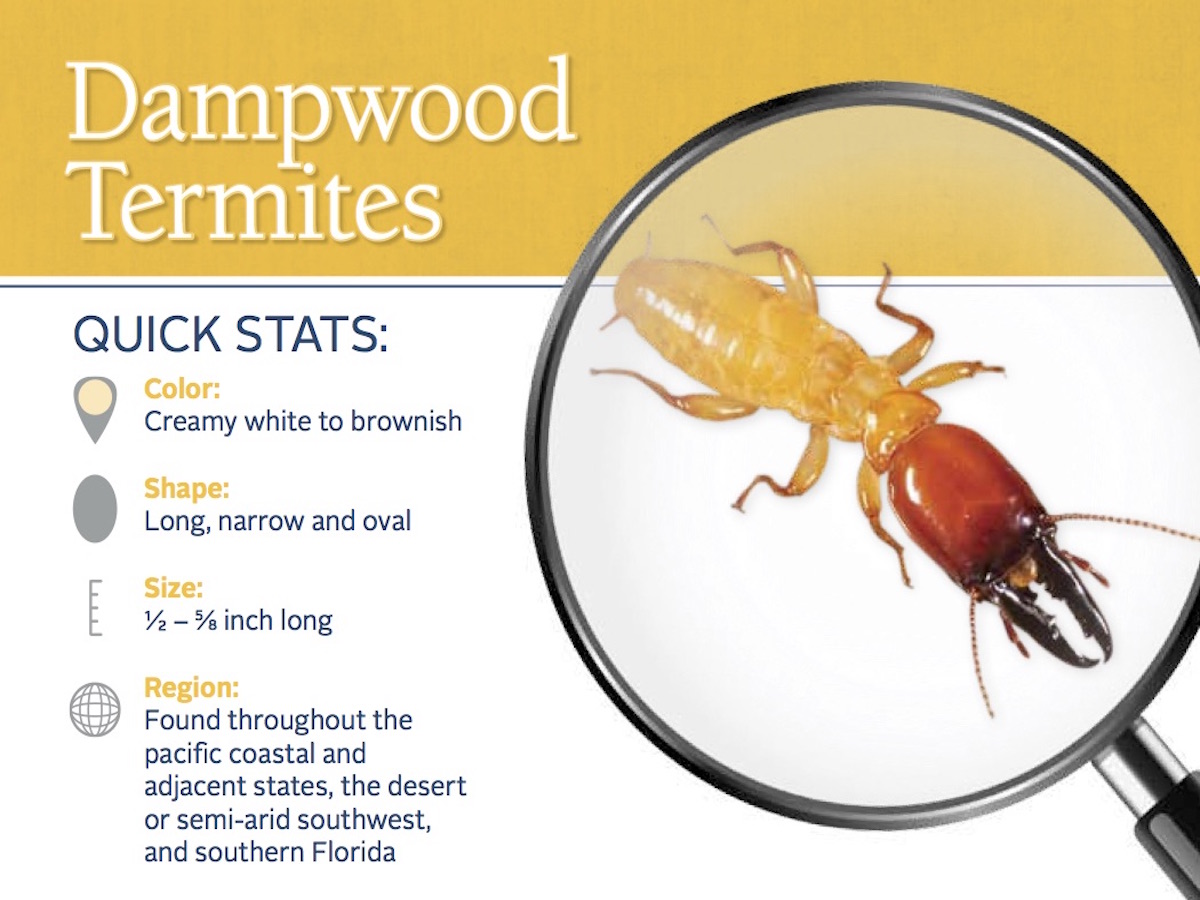
Dampwood termites typically live in damp, decaying wood such as dead trees, stumps, and logs, but can also be found in damp buildings. They are usually found in areas of high humidity, such as bathrooms, kitchens, and basements. Signs of dampwood termites include swarms of winged adults in the summer months, wood that is soft and spongy to the touch, sawdust-like material around wood, and discarded wings near windows or doors. Subterranean termites, on the other hand, do not swarm and their colonies are usually located in the soil.
Damage Caused by Dampwood Termites
- Damage to wooden structures such as furniture, walls, and floors.
- Damage to insulation and other materials.
- Damage to trees and shrubs in the landscape.
- Damage to paint and varnish on wooden surfaces.
- Damage to wooden window frames and door frames.
- Damage to wood used in construction projects.
- Damage to wooden decks and patios.
- Damage to wooden boats.
Dampwood termites can cause significant damage to wooden structures, including furniture, walls, and floors, as well as to insulation and other materials. They also cause damage to trees and shrubs in the landscape. In addition, they can damage paint and varnish on wooden surfaces, window and door frames, wood used in construction projects, decks and patios, and wooden boats.
Prevention and Treatment of Dampwood Termites
- Eliminate sources of moisture such as leaking plumbing fixtures and water-damaged wood, particularly in crawl spaces and attics.
- Keep wood piles and other cellulose materials away from the foundation walls.
- Caulk or seal any cracks or crevices in the building foundation and walls.
- Reduce humidity levels in the crawl space and attic.
- Install a physical barrier such as a sheet metal or concrete wall between the structure and the wood piles.
- Regularly inspect the structure for signs of dampwood termites, such as mud tubes, frass, and damaged wood.
- If dampwood termites are found, contact a pest management professional to treat the infestation.
- For minor infestations, spot treatments of insecticides can be used. However, it is important to note that these treatments do not provide long-term control.
- For severe infestations, fumigation may be necessary. Fumigation is a more effective method for controlling dampwood termite infestations and can provide long-term control.
Frequently Asked Questions
What are Dampwood Termites?
Dampwood termites are a species of termite found in moist, decaying wood in areas with high humidity. They are larger than other species of termite and are typically found in logs and stumps near rivers and streams, as well as in old buildings with damp wood. They feed on cellulose in the wood and form colonies with multiple generations of workers and reproductive termites. They are also capable of causing structural damage to buildings if left unchecked.
What is the relationship between termites and wet wood?
Dampwood termites are attracted to moist, decaying wood, and actively seek out these sources of food. As they feed on the wood, they weaken the structural integrity of the wood, making it more susceptible to further damage. Wet wood provides an ideal environment for termites to thrive, giving them the moisture and food they need to survive. Dampwood termites are most commonly found in moist environments, such as areas with high humidity, near bodies of water, and in wood that has been exposed to water.
Are dampwood Termites Different from Other Types of Termites?
Dampwood termites are different from other types of termites in several ways. They usually live in damp, decaying wood, such as fallen trees or branches, stumps, and logs. Unlike other species of termites, they do not require soil contact to survive. Additionally, they are larger than other species and are usually light to dark brown in color. They also have a larger, thicker head than other species, which helps them to better chew through the wood they inhabit. Finally, dampwood termites typically form colonies of fewer individuals than other types of termites, and their colonies are more spread out.
What are some treatments for dampwood termites?
Treatment for dampwood termites involves removing the source of moisture and cutting off their food supply. Wood services should be replaced and repaired and any water leaks should be sealed. In some cases, liquid insecticides can be used to treat dampwood termites. Boric acid or insect growth regulators are often used in soil around foundations to control dampwood termite infestations. Professional pest control services can provide chemical treatments as well as options for exclusion and monitoring.
How can I get rid of dampwood termites in my home?
The best way to get rid of dampwood termites from a home is to contact a professional pest control expert. An experienced exterminator can inspect the home, identify the type of termite, and provide the best treatment to eliminate them. Treatment options may include chemical applications, baiting, or fumigation, depending on the severity of the infestation. Homeowners can also take preventative steps to protect their home from dampwood termites, such as sealing cracks and crevices in the foundation, removing excess moisture, and storing firewood away from the house.
Conclusion
Dampwood termites can cause a significant amount of damage to buildings and other structures. In addition to the physical damage they can cause, dampwood termites can also contribute to other problems such as health issues, nuisance odors, and pest infestation. For these reasons, it is important to take steps to prevent and control dampwood termites. Properly maintained and regularly inspected buildings are the best defense against damage caused by dampwood termites. If dampwood termite infestations are discovered, professional pest control services should be contacted for treatment and removal.







